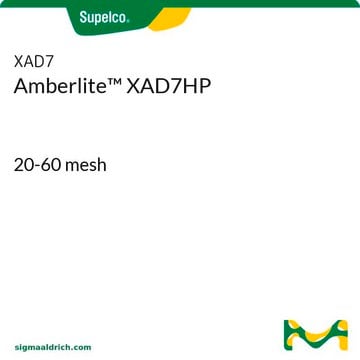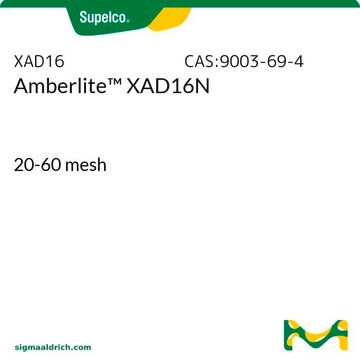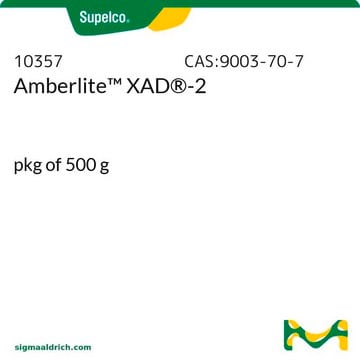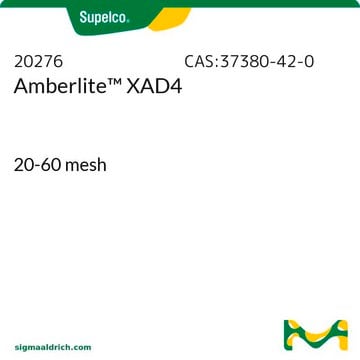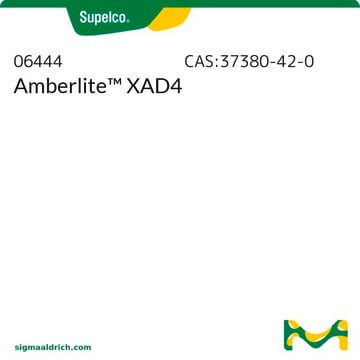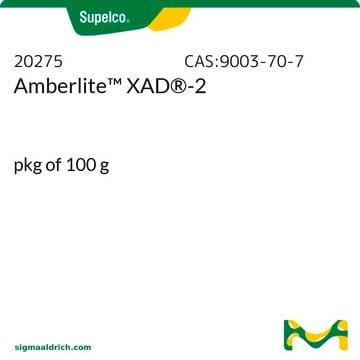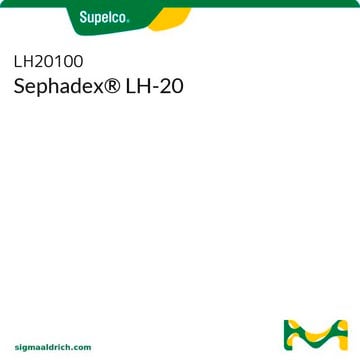The following pretreatment is recommended:
1.The adsorbent is shipped as a water-wet product with sodium chloride (NaCl) and sodium carbonate (Na2CO3) salts to prevent bacterial growth. These salts need to be washed from the adsorbent before use, and it is suggested that this be achieved by washing with water at a linear flow rate of 5-10 m/h until the required level is achieved.
2.For sensitive applications, residual monomeric or oligomeric compounds may need to be removed from the adsorbent.
3.A regeneration with the proposed regenerant is also recommended before the first service cycle. If the regenerant is an alcohol, it must be displaced with water before the first loading cycle.
Select a Size
Select a Size
About This Item
Recommended Products
Product Name
Amberlite™ XAD4, 20-60 mesh
form
beads
Quality Level
autoignition temp.
800 °F
technique(s)
LPLC: suitable
surface area
750 m2/g
matrix
styrene-divinylbenzene
matrix active group
polymer
particle size
20-60 mesh
pore size
~0.98 mL/g pore volume
100 Å mean pore size
density
1.02 g/mL (true wet)(lit.)
1.08 g/mL (skeletal)(lit.)
separation technique
reversed phase
Looking for similar products? Visit Product Comparison Guide
General description
Application
Other Notes
Mesh 20-60 are Cat. Nos. 20276, 10358, XAD4
Mesh 20-50 is Cat. No. 06444
Legal Information
Storage Class Code
11 - Combustible Solids
WGK
WGK 3
Flash Point(F)
Not applicable
Flash Point(C)
Not applicable
Personal Protective Equipment
Choose from one of the most recent versions:
Already Own This Product?
Find documentation for the products that you have recently purchased in the Document Library.
-
What is the recommended method for cleaning XAD4 before use?
1 answer-
Helpful?
-
Active Filters
Our team of scientists has experience in all areas of research including Life Science, Material Science, Chemical Synthesis, Chromatography, Analytical and many others.
Contact Technical Service